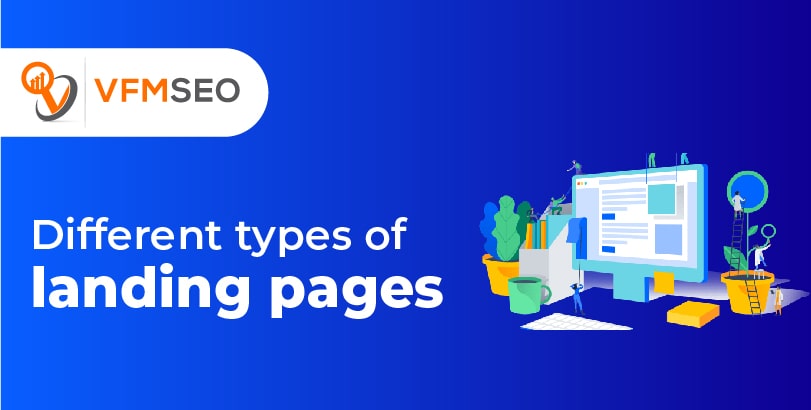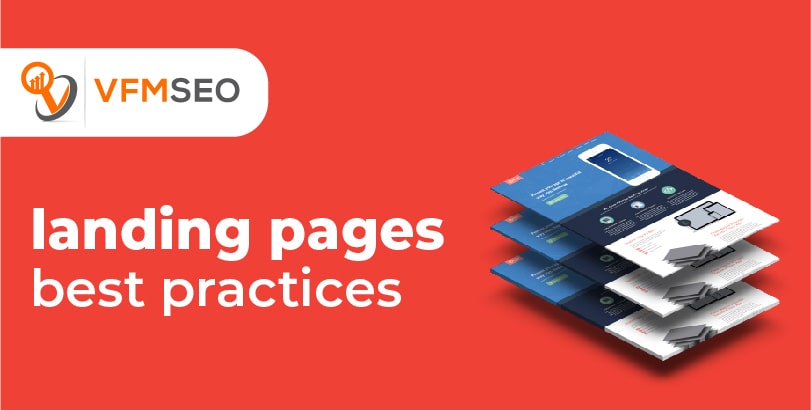
Landing Pages Best Practices, How to Get Started?
It is your website’s goal to entice visitors to take action by becoming clients or customers. In order to convert visitors to customers or clients, however, landing pages are usually necessary.
Landing pages: what are they, and how are they used?
A landing page is a single web page to get the visitor to take a specific action.
In some cases, a landing page can be displayed based on an action that a visitor takes (clicking on an advertisement, downloading a white paper, etc.). Most commonly, the desired action is the entry of an email address, the signing up for a webinar, or the purchase.
While you don’t have to have a website to create a landing page (for example, you may have an email list and direct people to a standalone landing page), landing pages usually appear on your website as individual pages.
In the following sections, we’ll explore some specific landing page examples.

Different types of landing pages
It can be difficult to identify a landing page since there are many types of landing pages, depending on their purpose. Therefore, here are some of the most popular landing pages.
Squeeze page
Squeeze pages are probably the type of landing page you’re most familiar with. Squeeze pages are designed to capture visitors’ email addresses. This is why it typically includes an offer for gated content such as one of your ebooks, white papers, checklists, or even just your weekly newsletter.
Lead capture page
Lead capture pages are similar to squeeze pages, though there are two main differences.
A lead capture page is either:
- Those visitors who have shown high interest (for example, those who have downloaded an ebook) or offer high-value materials (such as a free ebook or tool)
Splash page
Splash pages behave like landing pages that display either a special offer or targeted offers based on the visitor’s segmentation.
The splash pages can easily be recognized since they function as a gatekeeping you from accessing any other part of a website before they let you do so. Conversions are aided by splash pages, even though they may not be ideal for SEO.
Long-form landing page
A long-form landing page is probably your best bet if you have an offer, such as a course or service. Specifically, if what you sell is:
- High ticket
- Long-term commitment
- High risk
- Complicated
You can find fitness or coaching courses virtually anywhere.
Landing pages are used because people know a course may be a good idea but want to learn more about what makes your course different or better and why they should hire you to coach them.
404 error page
The likelihood of a reader bouncing is high if you send them to a blank 404 error page. So, it’s imperative to have a 404 landing page that redirects the reader to a relevant page.
Unsubscribe/Cancel page
Unsubscribe or cancel pages are surprisingly crucial landing pages. As it is significantly more expensive to acquire a new customer buy adderall from india than to retain an existing one, it is certainly worth your time to make a last-ditch effort to retain your existing customer (or at least understand why they are dissatisfied).
Here’s an excellent unsubscribe page designed by Adobe Photoshop. Among the four parts of their unsubscribe page are questions about why you are leaving, what you’d miss out on, a counter offer that changes the plan, and one more story about everything you’ll lose one more time.
Thank you page
A thank you page is another type of landing page that offers businesses a unique opportunity. It is estimated that converting an existing customer accounts for about 60 to 70 percent of the conversion rate, whereas converting a new prospect accounts for only about 5 to 30 percent.
You need to make use of your thank you page by offering up selling opportunities or additional (upgraded) content.

Landing page best practices
How should your landing page look once you know what kind of page you’re going to build?
There are some general guidelines to improve your conversion rates, even though they may vary slightly based on the type of landing page you plan to build (such as a 404 error page or a lead capture page).
Provide a clear call to action (CTA)
The goal of a landing page is to encourage the reader to take an action, and a clear call to action is essential.
Ideally, you should put your call to action above the fold, in a brighter or more recognizable color than the rest of your text.
Show how it works
If you have a product or service, ensure that your landing page shows how it works. Animated GIFs or videos on your website may demonstrate the tool in action, or you may have a video.
Minimize distractions
The more distractions you can minimize on your landing page (especially if you are using it for a squeeze page and lead capture), the more effective it will be.
Therefore, consider removing any other navigational links. If visitors have anywhere else to go on your website, they will likely prefer to click elsewhere. There is still a lot of room for improvement since only 16% of landing pages currently do not have navigation links.
Get started with your landing page
You now have a clear understanding of everything you need to know about landing pages and you can start creating one. In addition to increasing leads and conversions, landing pages provide a better customer experience by providing more targeted content.
Learning how to create landing pages involves a learning curve, but the best way to improve your skills is to start and run tests. If you don’t know where to start, consider creating a splash page with one call to action.
In the future, you will be able to further develop your funnel’s functionality, capture leads, upsell, and downsell, and nurture your customer relationships as you get more comfortable with the software.

